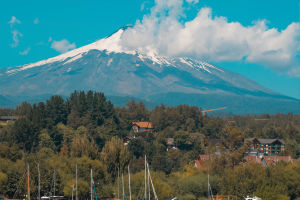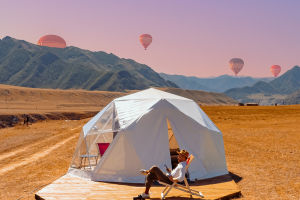Welcome Lykkers! Kilimanjaro National Park, located in Tanzania, is one of Africa’s most iconic natural treasures, home to Mount Kilimanjaro.
The highest peak in Africa and the tallest free-standing mountain in the world, this UNESCO World Heritage Site draws adventurers, nature enthusiasts, and cultural explorers from across the globe.
Kilimanjaro National Park
A Natural Wonder
At the heart of Kilimanjaro National Park stands Mount Kilimanjaro, a majestic volcanic massif rising approximately 5,895 meters (19,341 feet) above sea level. Comprised of three volcanic cones—Kibo, Mawenzi, and Shira—this dormant volcano has become a bucket-list destination for climbers. The summit, known as Uhuru Peak, offers breathtaking views that reward those who dare to take on the challenge of the climb.
But Kilimanjaro is not just for mountaineers. Its varied landscapes, from lush rainforests at the base to alpine deserts and icy glaciers at the summit, offer something for everyone. This extraordinary range of ecosystems is rarely found in a single location, making the park a haven for biodiversity.
Wildlife and Biodiversity
The park is home to a rich array of flora and fauna, many of which are unique to the area. In the lower altitudes, visitors can encounter dense rainforests teeming with life. Colobus monkeys, blue monkeys, and bush babies are just a few of the animals that can be spotted in the forest canopy.
As you ascend, the landscape transforms dramatically. The montane forests give way to heaths, moorlands, and alpine meadows, each with its unique plant species. The giant groundsels and lobelias, found in the moorland zone, are particularly striking and seem almost alien in appearance.
Wildlife enthusiasts may also catch glimpses of larger mammals, such as elephants, buffaloes, and leopards, which inhabit the park's lower regions. Birds, too, are abundant, with species like malachite sunbirds and African crowned eagles adding to the park's vibrant biodiversity.
Climbing Kilimanjaro
One of the main draws of Kilimanjaro National Park is the opportunity to climb the legendary mountain. There are several routes to the summit, each offering a different level of difficulty and scenery. Popular routes include the Marangu, Machame, and Lemosho trails, which cater to various experience levels and preferences.
Climbing Mount Kilimanjaro does not require technical mountaineering skills, making it accessible to a wide range of trekkers. However, it is still a physically demanding endeavor, requiring preparation and acclimatization to the high altitudes. The journey typically takes 5 to 9 days, depending on the chosen route, and climbers are rewarded with unforgettable views and the sense of accomplishment that comes with reaching the "Roof of Africa."
Cultural Significance
Mount Kilimanjaro holds profound cultural and spiritual importance for the local Chagga people, who have lived in the region for generations. The mountain is considered sacred, and many traditional stories and legends are tied to its peaks. Visitors have the opportunity to learn about the Chagga's rich heritage, including their unique farming practices, traditional dances, and vibrant markets.
Conservation Efforts
Kilimanjaro National Park faces challenges such as climate change, deforestation, and increased tourism. The melting glaciers at the mountain's summit are a stark reminder of the effects of global warming. Efforts are underway to preserve this natural wonder, with the Tanzanian government and international organizations working together to ensure sustainable tourism and protect the park’s fragile ecosystems.
Plan Your Visit
The best time to visit Kilimanjaro National Park is during the dry seasons, from January to March and June to October, when the weather is most favorable for trekking and wildlife viewing. Whether you’re climbing to the summit, exploring the lower trails, or simply soaking in the beauty of the surroundings, a trip to Kilimanjaro National Park is an unforgettable adventure.
Kilimanjaro National Park is a place of unparalleled beauty and significance. From its awe-inspiring landscapes to its rich cultural heritage, the park offers something for every traveler. Whether you dream of standing on the summit of Mount Kilimanjaro or simply want to experience the wonder of its diverse ecosystems, this extraordinary destination promises memories that will last a lifetime.


